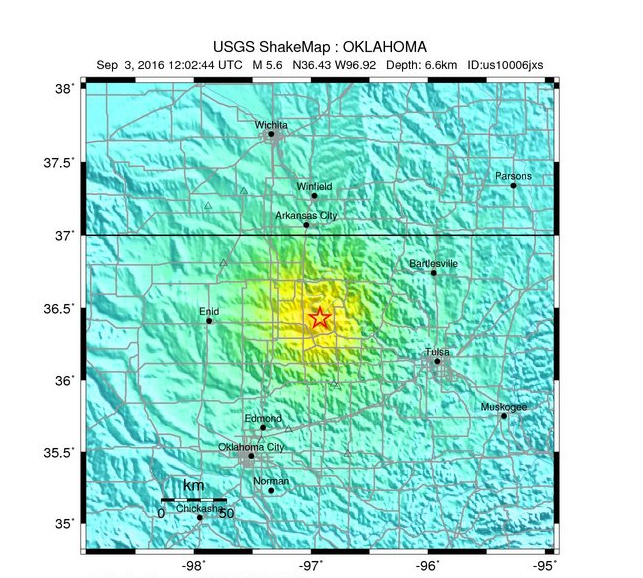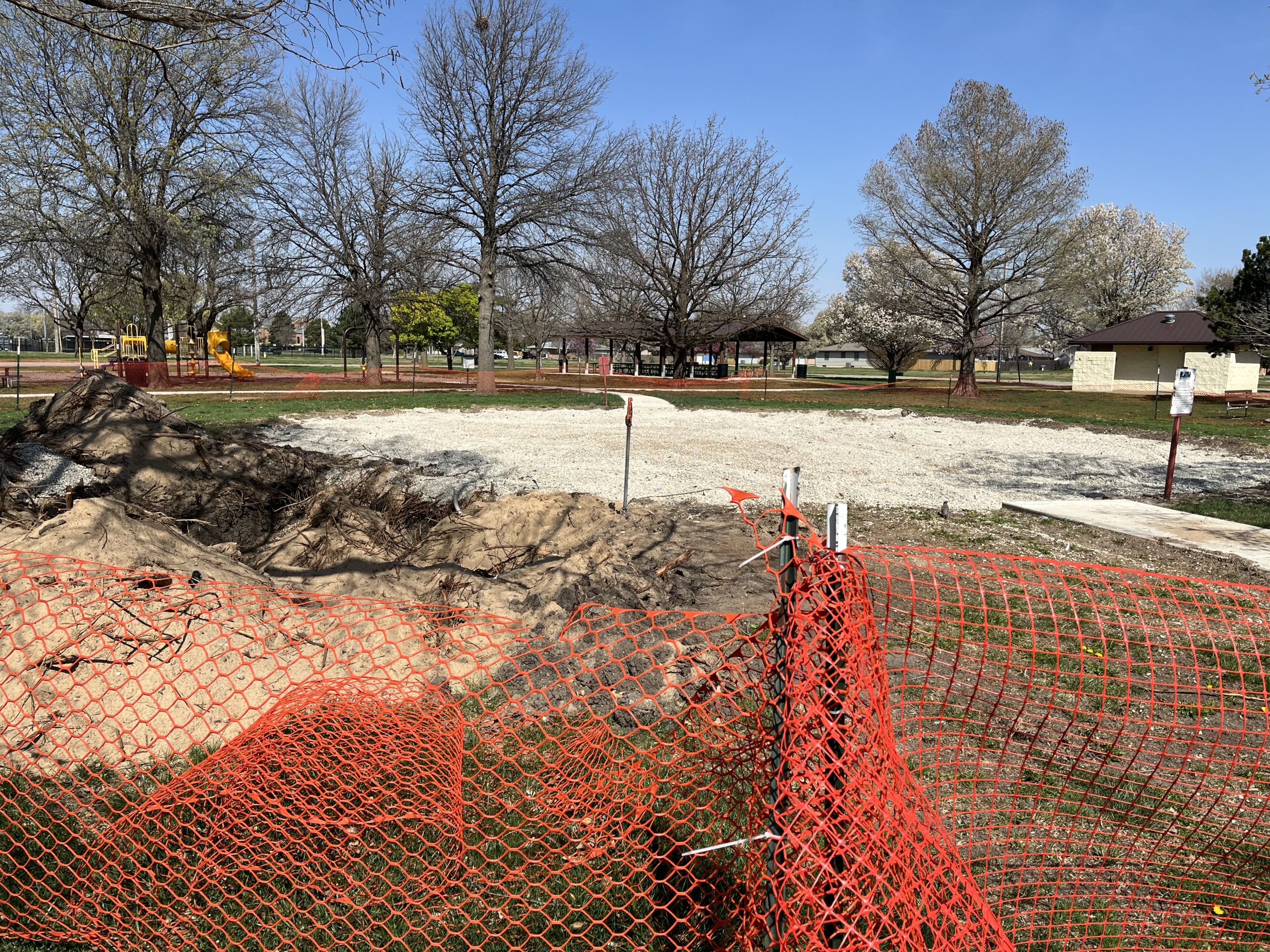A record-tying earthquake in the edge of Oklahoma’s key energy-producing areas rattled the Midwest from Illinois to the southwest part of Texas on Saturday, bringing fresh attention to the practice of disposing oil and gas field wastewater deep underground.
The United States Geological Survey said a 5.6 magnitude earthquake happened at 7:02 a.m. Saturday in north-central Oklahoma, on the fringe of an area where regulators had stepped in to limit wastewater disposal. That temblor matches a November 2011 quake in the same region.
An increase in magnitude 3.0 or greater earthquakes in Oklahoma has been linked to underground disposal of wastewater from oil and natural gas production.
The Oklahoma Corporation Commission, which since 2013 has asked wastewater-well owners to reduce disposal volumes in parts of the state, is requiring 37 wells in a 514 square-mile area around the epicenter of the earthquake to shut down within seven to 10 days because of previous connections between the injection of wastewater and earthquakes.
“All of our actions have been based on the link that researchers have drawn between the Arbuckle disposal well operations and earthquakes in Oklahoma,” spokesman Matt Skinner said Saturday. “We’re trying to do this as quickly as possible, but we have to follow the recommendations of the seismologists, who tell us everything going off at once can cause an (earthquake).”
Skinner said the commission’s “area of interest” includes another 211 square miles in Osage County. However, he said the commission doesn’t know how many wells may be involved because the area is under the jurisdiction of the Environmental Protection Agency, and the commission is working with that agency.
“EPA decides on the wells in Osage County. We don’t know anything about Osage County, legally we’re not even allowed to ask,” Skinner said.
People in Kansas City and St. Louis, Missouri; Chicago; Gilbert, Arizona; Fayetteville and Little Rock, Arkansas; Des Moines, Iowa; Memphis, Tennessee; and Big Lake in the southwest part of Texas, all reported feeling the earthquake. Dallas TV station WFAA tweeted that the quake shook its studios, too.
Pawnee County Emergency Management Director Mark Randell said no buildings collapsed in the town of 2,200 about 9 miles southeast of the epicenter. “We’ve got buildings cracked,” Randell said. “Most of it’s brick and mortar, old buildings from the early 1900s.”
Randell also said a man suffered a minor head injury when part of a fireplace fell on him as he protected a child. The man was treated and released.
Oklahoma Gov. Mary Fallin has declared a state of emergency for Pawnee County, allowing state agencies to make emergency purchases related to disaster relief and preparedness. The declaration is also the first step toward seeking federal aid should it be necessary.
The damage is not as severe as the 2011 quake near Prague, Oklahoma, about 60 miles south of Pawnee, despite being the same magnitude and approximately the same depth. Saturday’s was 3.7 miles deep, compared to 3.1 miles in 2011. Both are shallow quakes, during which shaking is more intense, like setting off “a bomb directly under a city,” USGS seismologist Susan Hough has said.
However, hard bedrock beneath the surface in north-central Oklahoma is likely the reason for less damage, Oklahoma Geological Survey geophysicist Jefferson Chang said, adding that the subsurface around Prague is softer.
“It’s pretty much comparable to the Prague event,” Chang said. “But in harder rock, it won’t shake as much.”
Pawnee furniture store owner Lee Wills told The Associated Press that he first thought it was a thunderstorm.
“Then it just … Everything went crazy after that. It just started shaking,” said Wills, who lives about 2½ miles outside of town. “It rocked my house like a rubber band. Threw stuff off cabinets and out of cabinets, broke glasses.”



